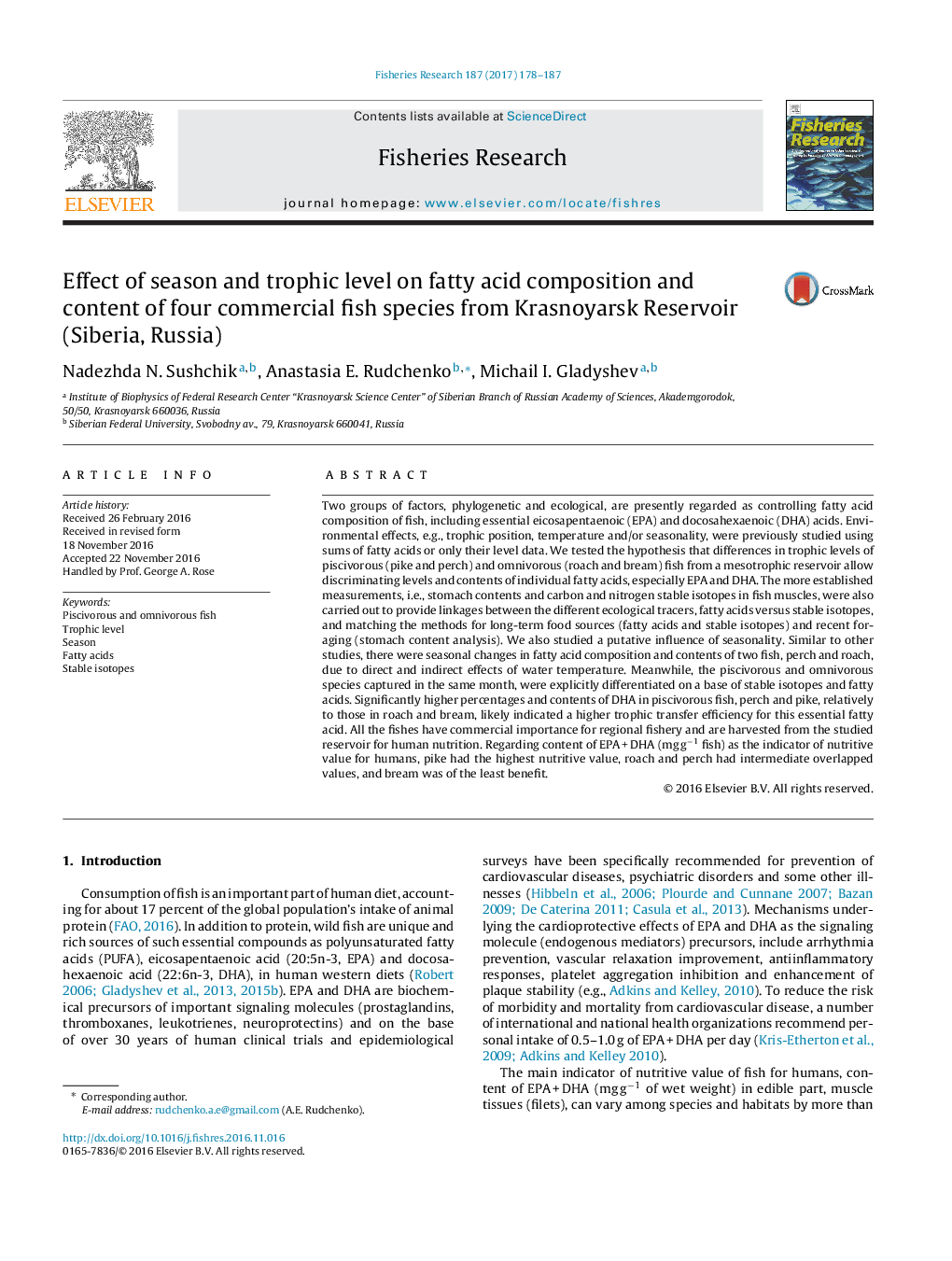| کد مقاله | کد نشریه | سال انتشار | مقاله انگلیسی | نسخه تمام متن |
|---|---|---|---|---|
| 5765656 | 1626783 | 2017 | 10 صفحه PDF | دانلود رایگان |
عنوان انگلیسی مقاله ISI
Effect of season and trophic level on fatty acid composition and content of four commercial fish species from Krasnoyarsk Reservoir (Siberia, Russia)
ترجمه فارسی عنوان
اثر فصل و سطح طوفیک بر ترکیب اسید چرب و محتوی چهار گونه ماهی تجاری از مخزن کراسنویارسک (سیبریا، روسیه)
دانلود مقاله + سفارش ترجمه
دانلود مقاله ISI انگلیسی
رایگان برای ایرانیان
کلمات کلیدی
ماهی ماهی قزل آلا و علف هرز، سطح تغذیه، فصل، اسیدهای چرب، ایزوتوپهای پایدار،
موضوعات مرتبط
علوم زیستی و بیوفناوری
علوم کشاورزی و بیولوژیک
علوم آبزیان
چکیده انگلیسی
Two groups of factors, phylogenetic and ecological, are presently regarded as controlling fatty acid composition of fish, including essential eicosapentaenoic (EPA) and docosahexaenoic (DHA) acids. Environmental effects, e.g., trophic position, temperature and/or seasonality, were previously studied using sums of fatty acids or only their level data. We tested the hypothesis that differences in trophic levels of piscivorous (pike and perch) and omnivorous (roach and bream) fish from a mesotrophic reservoir allow discriminating levels and contents of individual fatty acids, especially EPA and DHA. The more established measurements, i.e., stomach contents and carbon and nitrogen stable isotopes in fish muscles, were also carried out to provide linkages between the different ecological tracers, fatty acids versus stable isotopes, and matching the methods for long-term food sources (fatty acids and stable isotopes) and recent foraging (stomach content analysis). We also studied a putative influence of seasonality. Similar to other studies, there were seasonal changes in fatty acid composition and contents of two fish, perch and roach, due to direct and indirect effects of water temperature. Meanwhile, the piscivorous and omnivorous species captured in the same month, were explicitly differentiated on a base of stable isotopes and fatty acids. Significantly higher percentages and contents of DHA in piscivorous fish, perch and pike, relatively to those in roach and bream, likely indicated a higher trophic transfer efficiency for this essential fatty acid. All the fishes have commercial importance for regional fishery and are harvested from the studied reservoir for human nutrition. Regarding content of EPA + DHA (mg gâ1 fish) as the indicator of nutritive value for humans, pike had the highest nutritive value, roach and perch had intermediate overlapped values, and bream was of the least benefit.
ناشر
Database: Elsevier - ScienceDirect (ساینس دایرکت)
Journal: Fisheries Research - Volume 187, March 2017, Pages 178-187
Journal: Fisheries Research - Volume 187, March 2017, Pages 178-187
نویسندگان
Nadezhda N. Sushchik, Anastasia E. Rudchenko, Michail I. Gladyshev,
